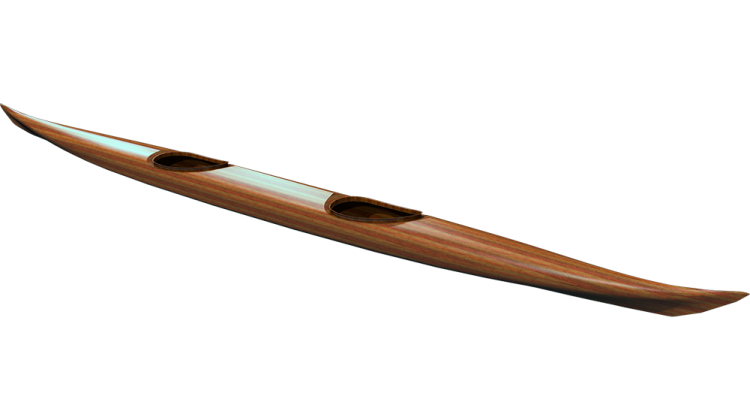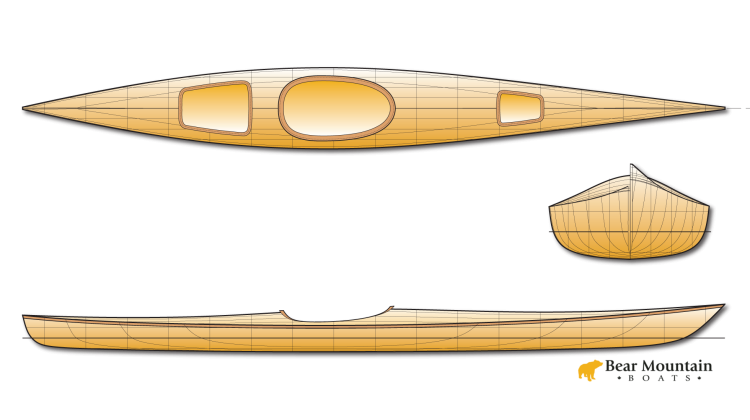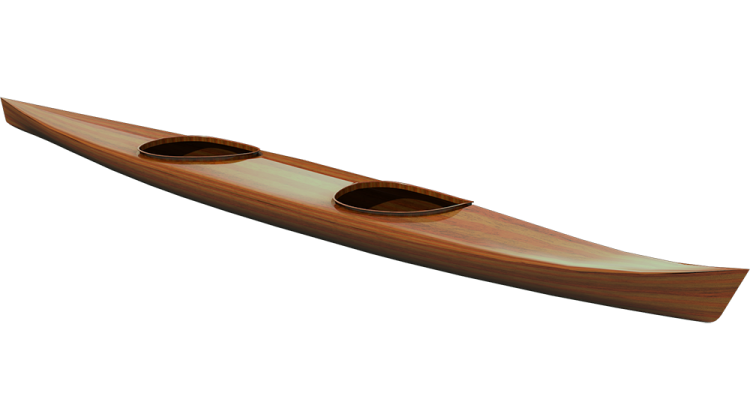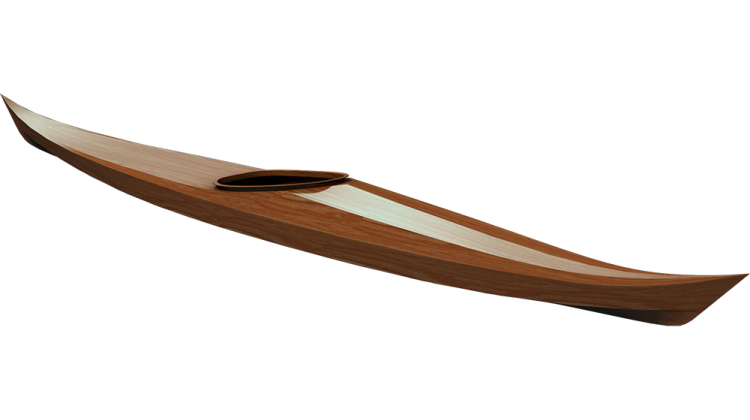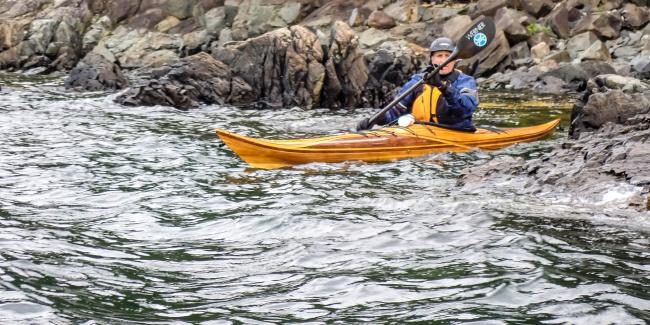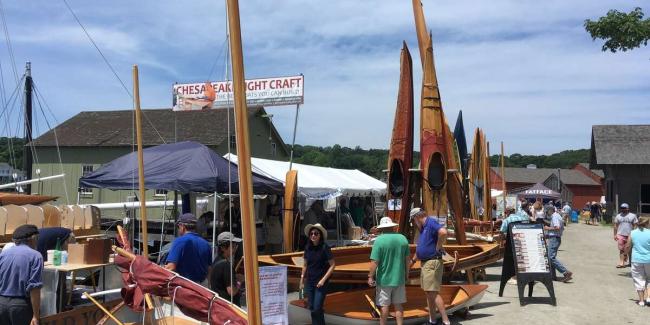Transcript
Hi I'm Nick Schade at Guillemot Kayaks, welcome the 14th episode in my series on building the strip built Petrel Play kayak.
In the last episode I glassed the coaming and the deck interior. In this episode I'll cut and install the hatch, install the deck fittings and cheek plates and make end-pours.
I usually cut the hatches freehand by tracing a pattern on to the deck and cutting it out with a jigsaw, but the back deck of the Petrel Play is nearly perfectly flat. This allowed me to make a template on my CNC machine then cut the hatch with a router.
I'm using a tiny 1/16-inch router bit in my small plunge router and cut the hatch in a couple passes.
The hatch sill is made from two parts. A spacer, that has the same inner diameter as the hatch, and the lip, with a 3/4-inch smaller inner diameter. They both have the same outer dimension about 1/2-inch larger than the hole.
I dry fit the parts to make sure everything is the right size and fits well. This also allows me to practice getting everything aligned before they are sticky with epoxy.
I want to glue the spacer and the lip together before gluing the assembled sill into the boat. This way I can clean up any glue squeeze out and sand the edges before final assembly. Some tape on the deck interior lets me remove the sill after the glue cures.
The masking tape contains the mess and nothing sticks to this clear blue flash tape.
Assembling the sill in place on the deck assures that the finished piece matches the slight curve of the deck.
With the spacer in place I apply some epoxy to the surface. I've added some colloidal silica to the epoxy to make thicker glue.
I also apply glue on the mating surface of the lip. Gluing both sides assures there are no pin holes to allow water into the finished hatch.
There is no such thing as too many clamps. I want a tight seam all the way around.
This kayak is getting some of my recessed deck line fittings. These are mounted through egg shaped holes in the deck. I cut the holes using a template and a router.
The slot for the retractable skeg control is installed in a similar manner.
The recessed fittings need a little shaping to fit to the curved deck surface.
I scuff up the fiberglass for a stronger glue bond.
The fittings will get a layer of fiberglass over the inside for strength and protection. Masking tape around each fitting contains the mess.
Each hole and fitting is coated with un-thickened epoxy that will soak into the wood before applying epoxy thickened with wood flour as the final glue.
The skeg control slot is installed in the same manner.
Off camera I rounded over the edges of the hatch sill then glued it in place. Now I want a layer of fiberglass to reinforce it and encapsulate the wood.
I use bias cut strips to conform to the shape and contours.
It is my goal to have a layer of fiberglass cloth over every bit of wood in the whole kayak. While varnish provides good protection. The thickness and reinforcement provided by the fiberglass and epoxy followed by varnish creates a layer of armor that cannot be matched by a couple coats of varnish.
This often means a lot of extra work. Getting the glass to wrap over these deck fitting bumps is a hassle. But it's a lot easier to do this now than to replace a rotten piece later because someone failed to maintain the kayak properly.
Cheek plates help keep your butt centered in the kayak. They also provide a convenient place to mount the backrest. I weld the plate in place with CA glue.
CA glue by itself isn't strong enough so the plates are reinforced with fillets and fiberglass.
I also added some carbon fiber for additional strength.
Fillets and glass on both sides of the plates.
A traditional endpour involves standing the kayak on end and pouring some resin in to make a solid tip.
Instead I'm going to make a little dam at each end out of an old squeegee to create a reinforced place to mount a grab loop.
The dammed volume doesn't need to be large, just big enough to drill a hole through.
I added some quartz micro-spheres to the epoxy to make a thick lightweight mix and then a little graphite powder to darken the color.
After lightly scoring the fresh fiberglass and epoxy with a sharp utility knife I peel off the excess fiberglass.
On the outside of the deck, the deckline fittings and skeg control slot are planed, rasped and sanded flush and smooth.
The outside of the fittings are protected under a layer of fiberglass.
The excess glass is trimmed then a fill coat is added.
After the epoxy has set up, the remaining glass is trimmed, and the ragged edges are sanded smooth.
Over on the hull, the end-pours are cured and the dam can be popped out.
I rasp off the excess material to allow for a snug fit with the deck.
This little jig measures a consistent distance down from the sheer while providing a horizontal reference as I drill through the end-pour.
I start with a quarter inch pilot hole going all the way through.
Then I make a large countersink on either side.
I finish with a 3/8-inch hole, going half way through from one side then completing it from the other side. This prevents blowout while keeping the hole in the right place.
The deck and hull now almost complete and ready to join together. So, in the next episode I'll apply some varnish to the interior and then merge the deck and hull back into one unit.
If you have any questions on the work I did in this episode, please post them in the comments section, I'll be happy to answer everything I can.
Until the next episode, happy paddling and thanks for watching.

